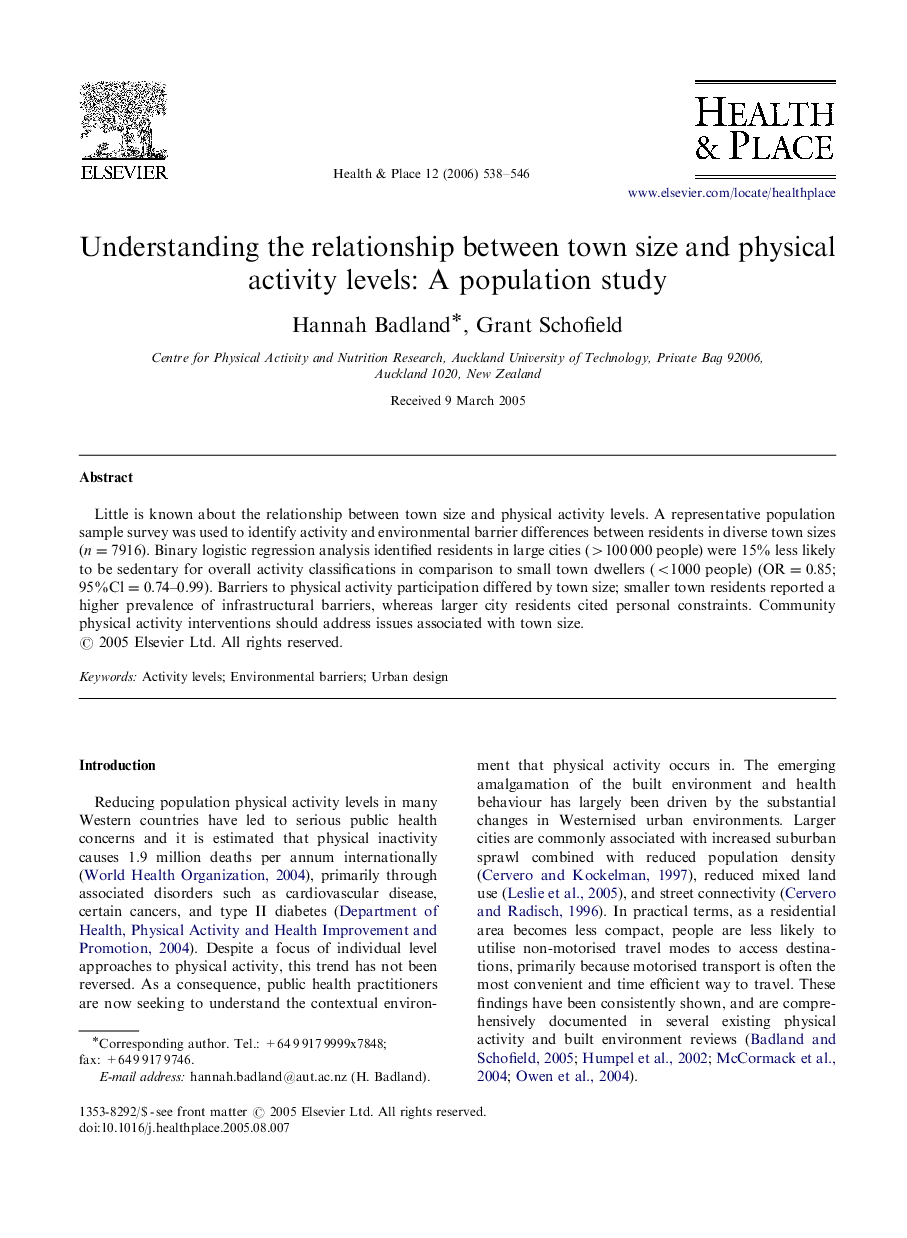| Article ID | Journal | Published Year | Pages | File Type |
|---|---|---|---|---|
| 1048978 | Health & Place | 2006 | 9 Pages |
Little is known about the relationship between town size and physical activity levels. A representative population sample survey was used to identify activity and environmental barrier differences between residents in diverse town sizes (n=7916n=7916). Binary logistic regression analysis identified residents in large cities (>100 000 people) were 15% less likely to be sedentary for overall activity classifications in comparison to small town dwellers (<1000 people) (OR=0.85; 95%Cl=0.74–0.99). Barriers to physical activity participation differed by town size; smaller town residents reported a higher prevalence of infrastructural barriers, whereas larger city residents cited personal constraints. Community physical activity interventions should address issues associated with town size.
